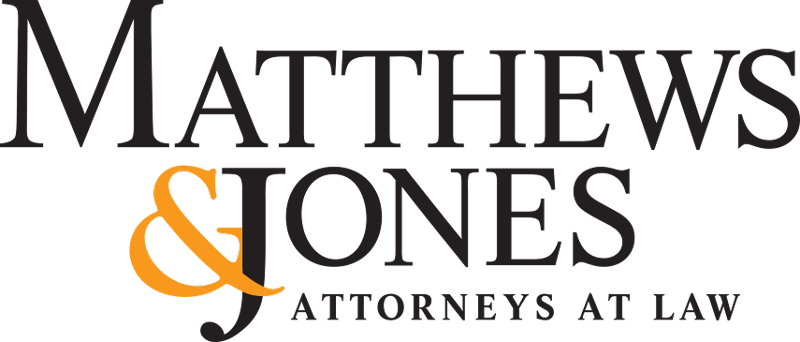
Small Business Relief available under the CARES Act (Coronavirus Aid, Relief, and Economic Security Act)
We at Matthews & Jones have been busy reviewing and learning about the CARES ACT and collaborating with our fellow banking and CPA professionals. We want to thank our colleagues at Trustmark Bank and Judd Jackson CPA for their insight and help in preparation of the CARES ACT summary below. As noted in the summary there are still areas of this information that are waiting for guidance to be published by the SBA. We will be sending out information updates as we receive them. Should you have any questions or need business consulting services to navigate these Acts, please contact Kenneth M. Borick in our firm.
New SBA 7a loan- PAYCHECK PROTECTION ACT basics
- Covered period 2/15/20 – 6/30/20
- Direct endorsed banks have delegated authority to do these loans
- SBA fees waived; 100% Government guaranteed.
- Who is covered?
- Any business less than 500 employees (including full time, part time and 1099 independent contractors)
- Some business over 500 if they meet the SBA Size standards.
- 501c3 not for profit entities- (no limit on employee size of non-profit)
- Priority is to be given to
- small businesses in small/underserved/rural,
- vets and military owned
- female owned businesses
- in operation for less than 2 years.
- OK if you already got a SBA disaster loan, can still apply
- Loan Specifics: Max $10 million loan
- Formula for loan amount: Multiplying 2.5 times eligible monthly payroll
- Payroll = Average total Monthly payroll for 2019
- Seasonal employer- calculate average total monthly payroll between 3/1/19 and 6/30/19 (or can use 12-week period beginning 2/15/19 if desired)
- If a newer business, use average monthly payroll for Jan/Feb 2020
- Eligible payroll
- Salary, wage, commission, etc. Max pay rate is $100k /year per employee.
- Tips
- Vacation/ family / sick leave
- Amounts for group health benefits including premiums
- Retirement benefits
- Payroll taxes (state, local) based on employee compensation
- Payments to sole proprietors, independent contractors or self-employment earnings, max is $100,000/year each (prorated to for covered period
- Employee must live within the US
- Does not count leave/ wages covered under section 7001 and 7003 of Families First Coronavirus Response Act.
- Eligible USE of Funds if you want eventual loan forgiveness-
- Eligible payroll, keeping group benefits,
- Mortgage interest (no principal) payments,
- Rents including under a lease agreement signed before 2/15/20
- Utilities
- Interest (no principal) on any other debt that was incurred prior to 3/1/20
- At least 75% of forgiveness amount must have been used for payroll
- Loans are NON-RECOURSE to shareholder/member/partner unless used for unauthorized purpose
- NO COLLATERAL REQUIRED
- REPAYMENT TERMS:
- Maximum loan maturity is 2 years from date of application for loan forgiveness
- Interest rate- currently stated at .5 %.
- No payments for 6 months.
- No prepayment penalty
- Qualifiers/ Certifications:
- Borrower was in operation on 2/15/20
- Borrower had employees that were paid salary/payroll tax or paid independent contractors (1099-misc)
- Must be adversely impacted by COVID- 19 (and needs loan) – which is being defined as :
- Supply chain disruption (quantity, lead time, delays, quality, shortages, etc.)
- Staffing challenges
- Decrease in gross receipts or customers
- A closure
- Funds will be used to retain workers/ payroll or make payments to loans/utilities
- Business doesn’t have any other loan application pending for same purpose (vague)
- Requirement that business cannot obtain credit elsewhere is waived from 3/1-12/31/20.
- Loan Forgiveness: e. ‘expected forgiveness amount’
- Covered period- ONLY the 8 WEEK PERIOD beginning at loan origination date
- Forgiveness only applies to costs incurred in first 8 weeks of loan
- Hypothetical– Total eligible payroll is $240,000 ($20k/mo.) for prior year
- $50,000 Total loan amount ($20,000 payroll x 2.5)
- Only funds spent during 8-week period are eligible for forgiveness
- ($36,923) Payroll (equal to 8 weeks payroll ($240,000/52 X 8). (76.25% of total forgivable amount in this scenario)
- ($6,000) Mortgage interest payments (for 8 weeks- loan in place before 2/15/20)
- ($1,000) rent for 8 weeks
- ($500) interest on other debts for 8 weeks
- ($4,000) utilities for 8 weeks
- $48,423 is forgivable in this scenario
- $50,000 Total loan amount ($20,000 payroll x 2.5)
- Notes:
- Debt/ Rent obligations (must be in place before 2/15/2020)
- Utilities defined: electricity/gas/water/transportation/telephone/internet
- NOTES on Loan Forgiveness
- If you fired an employee due to COVID-19 between 2/15/20 and 30 days after this bill goes into law, you can REHIRE them and their salary should count in the calculation.
- Reduction of employees or salary amounts will reduce forgiveness amount (not defined as to methodology of Calculation)
- NO forgiveness if the file isn’t complete with documentation
- Portions forgiven will not count as taxable income
- Limited to principal (interest on the loan is not forgivable)
- Must be applied for separately- Loan forgiveness decisions within 60 days of forgiveness application.
- Covered period- ONLY the 8 WEEK PERIOD beginning at loan origination date
Emergency Grants- covered period 1/31/20- 12/31/20
- Grants of up to $10,000 may be available
- Section 7B loan. Not sure how these will be given out.
- The $10,000 grant would be subtracted from any amount forgiven under the loan program above.
- Payroll tax filings reported to IRS
- Verification of # of FTE’s on the payroll and pay rates for the covered periods
- Form 1099-MISC, income and expenses from sole proprietorship (if applicable)
- State income/ payroll/ unemployment insurance filings
- Proof of debt payments on covered mortgages/ leases and utilities
- Acceptable proof: Cancelled Checks/ payment receipts/ account transcripts to verify
- Certification from business that info is true/correct
- Financial statements verifying payment on debt obligations prior to 3/1/20
- Any other documents the SBA deems necessary
- Suggested:
- Gather corporate financial statements/ tax returns
- Prepare to give proof ways affected by COVID-19
DECISIONS
- Due within 15 days (slightly vague language)
- Loans will be under the TIN (taxpayer identification #) of the company
- Self-employed / 1099 contractors are eligible
Please note: All information stated above is as of April 1, 2020, and is subject to change. We are doing the best with the information we have to date and new information is coming every day. This document was prepared for existing clients pursuant to their request for updating business law changes. There are no legal opinions being rendered herein.
- Suggested:
- Gather corporate financial statements/ tax returns
- Prepare to give proof ways affected by COVID-19
DECISIONS
- Due within 15 days (slightly vague language)
- Loans will be under the TIN (taxpayer identification #) of the company
- Self-employed / 1099 contractors are eligible
Please note: All information stated above is as of March 31, 2020, and is subject to change. We are doing the best with the information we have to date and new information is coming every day. This document was prepared for existing clients pursuant to their request for updating business law changes. There are no legal opinions being rendered herein.


